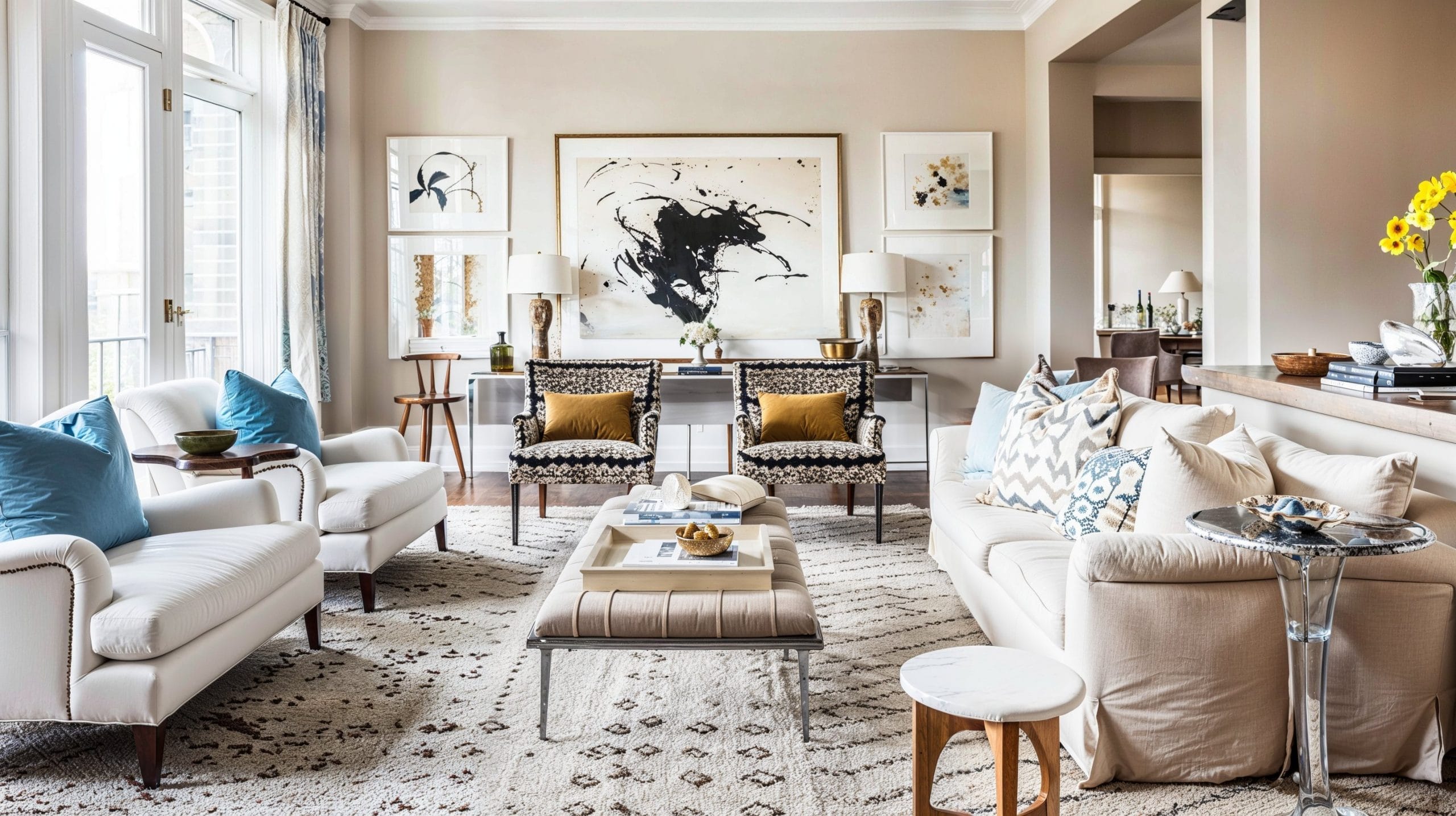Partner with expert interior design firms to craft elegant interiors.
Partner with expert interior design firms to craft elegant interiors.
Blog Article
Transform Your Home With Necessary Concepts of Interior Decoration and Aesthetic Appeals
By understanding the impact of color theory and the significance of appearance and patterns, one can create spaces that are not only aesthetically attractive however likewise deeply individual. Achieving this stability involves more than plain design; it encompasses a critical setup and a keen understanding of just how each element connects within a room.
Understanding Shade Concept
Color theory is an essential aspect of indoor style that substantially influences mood, perception, and general visual. Understanding the concepts of shade theory allows designers to create rooms that resonate emotionally with occupants while satisfying useful needs (miami interior design). Colors can be categorized into three main types: key, secondary, and tertiary. Each group plays a vital function in establishing harmony within an area.
The emotional impact of shades is extensive; warm shades such as reds and oranges evoke energy and heat, while amazing tones like blues and greens advertise peace and peace. The usage of corresponding shades boosts visual interest, producing striking contrasts that can elevate a room's appeal.
Neutral colors, on the other hand, offer as a versatile backdrop, enabling various other layout components to radiate. It is important to consider variables such as lights and the space's function when choosing a shade scheme, as these can alter the understanding of colors throughout the day.
Inevitably, a well-considered color system can transform a room, promoting a feeling of comfort and design that aligns with the residents' choices. Proficiency of color concept is, as a result, a crucial skill for any type of interior designer intending to create harmonious and inviting settings.
Achieving Balance in Design
Just how can developers achieve a sense of balance in their spaces? Achieving equilibrium in design is essential to creating harmonious insides.
Asymmetrical equilibrium, on the other hand, depends on differing elements that still attain a cohesive look. This approach enables even more dynamic and casual setups, giving interest while preserving balance. By thoroughly selecting differing sizes, shades, and textures, designers can produce a visually engaging area that feels balanced yet energised.
Radial balance stresses a main centerpiece with components radiating exterior. This style is commonly seen in round designs, where furnishings and style produce a cohesive border that attracts the eye internal.
Eventually, achieving equilibrium requires thoughtful factor to consider of scale, proportion, and the relationships in between elements. interior design firms. By skillfully using these equilibrium concepts, developers can change spaces into environments that feel both cosmetically pleasing and functionally unified, boosting the overall experience for passengers
Importance of Spatial Understanding

A keen sense of spatial recognition Learn More allows developers to determine centerpieces within a room, leading the customer's attention to key features while preserving an overall feeling of unity. It likewise aids in the strategic placement of illumination, which can substantially affect the understanding of area and mood. Understanding spatial connections allows the designer to cater to the certain demands of occupants, ensuring that each area offers its desired function without jeopardizing looks.
Eventually, spatial awareness is critical for making the most of the possibility of any kind of indoor room. By meticulously thinking about the interaction between measurements, format, and function, developers can produce environments that not just satisfy sensible requirements but likewise stimulate a sense of convenience and elegance, improving the total living experience.
Including Appearance and Patterns
Embracing a varied variety of textures and patterns can significantly enhance the visual and tactile allure of an indoor space. The critical use numerous products-- such as wood, steel, textile, and rock-- produces deepness and interest, making an area really feel extra inviting and vibrant. Incorporating smooth surface areas with harsh appearances can establish a balance that draws the eye and engages the senses.
When incorporating patterns, consider both range and rep. Large patterns can function as centerpieces, while smaller, subtle designs can complement various other elements without overwhelming the space. Layering patterns, such as pairing flower pillows with striped throws, adds complexity and a sense of consistency check here if executed attentively.
It is likewise crucial to preserve a natural color combination, guaranteeing that structures and patterns collaborate instead of contend for focus. By choosing a few vital textures and patterns, you can create a merged visual that shows your individual style while enhancing the total setting of the space. Ultimately, the mindful incorporation of these elements can change an ordinary space right into a sophisticated atmosphere rich with character and warmth.
Individualizing Your Area
Developing a room that shows your character is important to accomplishing a really inviting atmosphere. Personalization in interior decoration allows you to instill your unique style and rate of interests into your home, changing it from a plain sanctuary right into a sanctuary that talks with that you are. Begin by picking a color palette that resonates with your feelings-- vibrant hues can stimulate, while soft tones provide tranquility.
Incorporate art work and decoration that mirror your interests, whether it be travel, nature, or abstract principles. Presenting individual collections, such as books, photographs, or keepsakes, can evoke valued memories and produce prime focus within an area. Furthermore, take into consideration customizing functional items, like upholstered furniture, to straighten with your visual preferences.

Verdict
In verdict, the makeover of a home look these up through the important principles of interior decoration and aesthetic appeal requires a thorough understanding of color theory, balance, spatial recognition, texture, and customization. Each aspect contributes dramatically to creating an unified and practical living environment - luxury interior design. By attentively incorporating these principles, individuals can enhance the aesthetic allure and emotional resonance of their spaces, eventually cultivating a home that shows one-of-a-kind identifications while providing comfort and practicality
Report this page